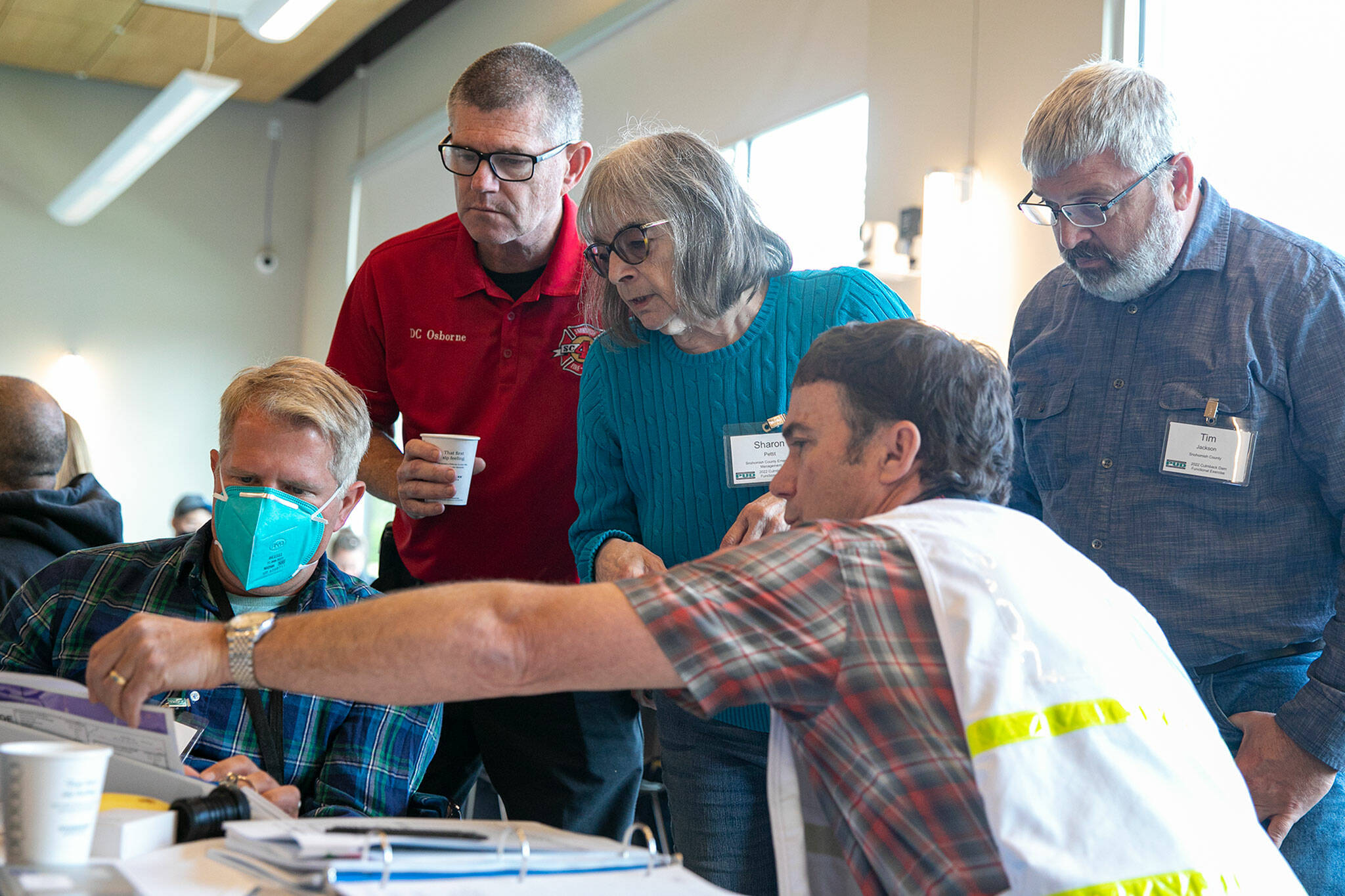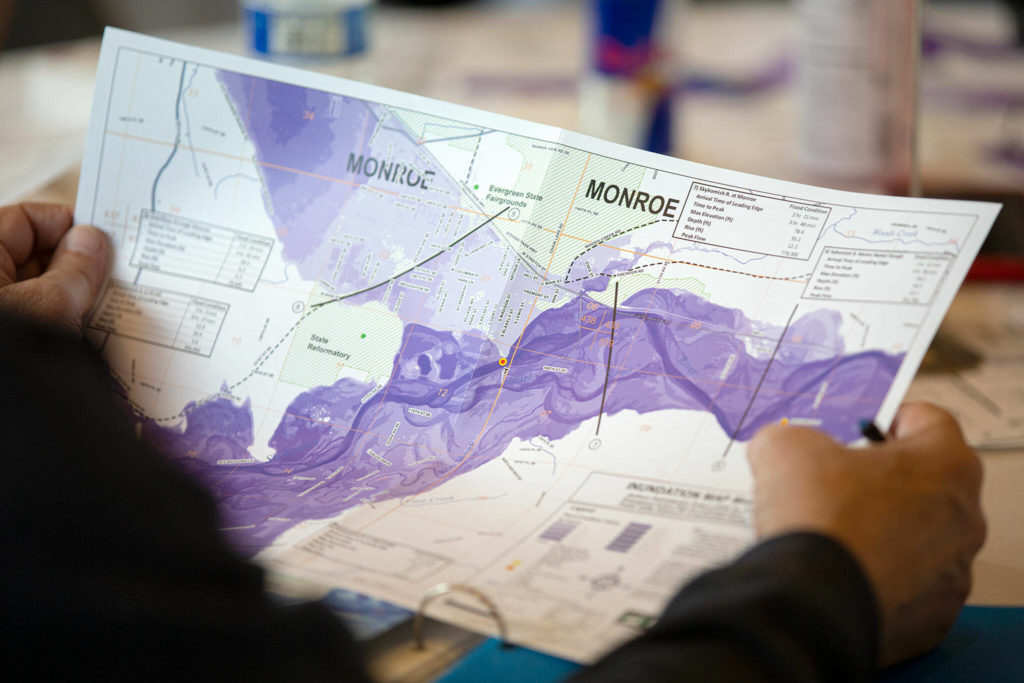SULTAN — What would happen if a breach of the Culmback Dam sent a wall of water rushing toward the Skykomish Valley? How would people be evacuated safely, with a few hours to spare?
About 75 people took part in an exercise Wednesday to practice that scenario.
The Snohomish County Public Utility District operates the Henry M. Jackson Hydroelectric Project on the Sultan River. The 112-megawatt facility supplies clean, renewable power to about 56,000 homes in Snohomish County.
The earthen dam is 262 feet high and 640 feet wide. Behind the dam is Spada Lake, a 1,870-acre reservoir.
The chance of the dam breaching is extremely low, said Kellie Stickney, a PUD spokesperson. However, in the event of dam failure, water from Spada Lake would cause significant flooding to Sultan and downstream communities.
The PUD is required to conduct the emergency exercise every five years as part of federal dam licensing requirements. The last drill took place in 2015 and was put on hold due to COVID-19.
It’s important to build “muscle memory” to respond well to a disaster, even if it’s unlikely, Stickney said.
Wednesday’s simulation included PUD personnel, first responders, law enforcement, city and school officials, and others. Participants had to respond to information in real time and make decisions. It was theater meets real life.
Organizers picked a “creative” surprise scenario, said Eric Schneider, chief dam safety engineer for the PUD.
In the scenario, a wildfire rips through the hillside above the dam. Heavy rains trigger a landslide on the unstable, burned slope. Timber slides into the lake and clogs the dam’s spillway.
“The capacity of that spillway is diminished and the water raises up and spills over the back,” Schneider said.
He likened the dam’s spillway to a bathtub with an overflow drain. You can leave the faucet on and walk away and the tub will never overflow.
“When the spillway is clogged, water can flow over the top of dam, erode the back, and fail the dam,” he said.
Water would reach Sultan in 1 hour and 36 minutes and Monroe in 2 hours and 48 minutes in “fair weather conditions,” according to an inundation map. The Snoqualmie Valley in north King County would also be flooded.
Schneider said the more likely scenario is that extreme rain has already flooded the rivers. In that event, there would be less time to respond.
At a PUD table, staff declared an emergency, talked about road closures and organized helicopters to remove debris from the spillway. A communications team got information out to the public — social media posts and wireless alerts, including Spanish-language versions.
One alert read: “Culmback dam failure. Flood wave on the way, taller than homes. LEAVE SULTAN east on U.S. 2.”
The exercise ended with flood waters reaching Monroe.
The drill was held at the new Sultan fire station, which includes an emergency operations center. The new station was built on Cascade View Drive, specifically out of the flood zone.
“This is the safe haven to manage disasters that might happen here,” Sultan Fire Chief Seth Johnson said.
He said Wednesday’s drill helped people get familiar working with each other.
“We need to be able to direct the community as to what their actions need to be,” he said.
For example, not all will need to evacuate. Those on higher ground in the Sultan Basin area would be out of the flood zone, he said.
The Culmback Dam was built in 1964, and the Jackson Hydroelectric Project began operating in 1984. Today it produces about 7% of the PUD’s power.
More information about safety at the Culmback Dam is available at the PUD’s website.
Jacqueline Allison: 425-339-3434; jacqueline.allison@heraldnet.com. Twitter: @jacq_allison.
Talk to us
> Give us your news tips.
> Send us a letter to the editor.
> More Herald contact information.




























